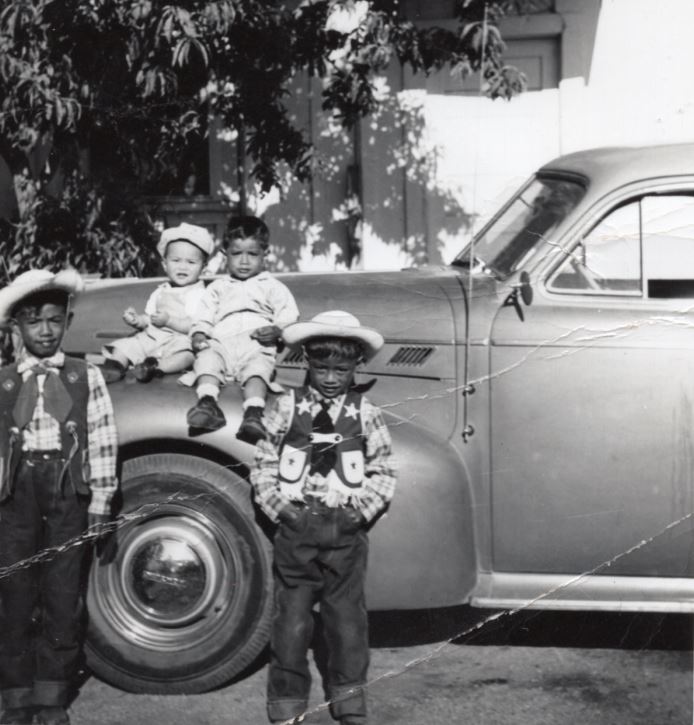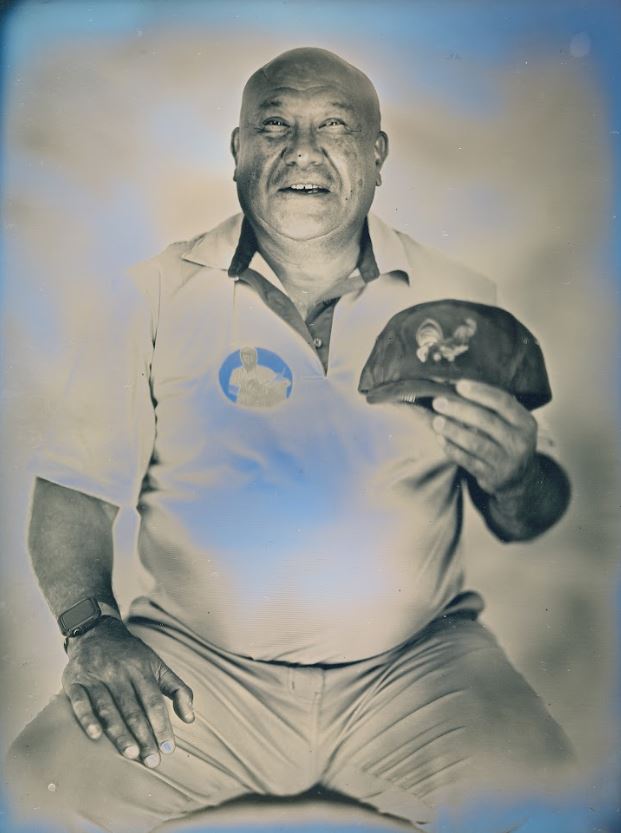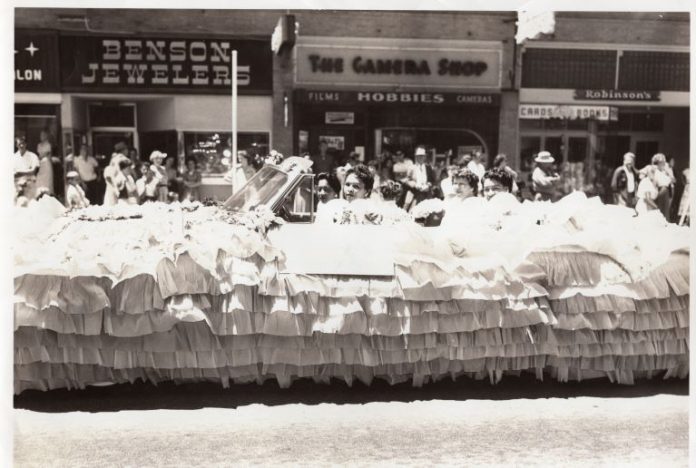By Saleah Blancaflor
As industries increasingly move online amidst the digital age, many historians are working to digitize historical documents, objects, and stories. One community working to preserve their memories is Filipino Americans.
Sowing Seeds: Filipino American Stories from the Pajaro Valley was an exhibit that debuted in April at the Santa Cruz Museum of Art and History in California and explored Filipino labor and migration to the Pajaro Valley from the 1930s to the present. It brought together oral history, familial archival contributions, and contemporary works of art to feature multidimensional narratives across four themes: Labor, gender, conflict, and memory.
The exhibit, which just ended earlier this month, is the culmination of a four-year research initiative between community members, University of California, Santa Cruz (UCSC) students, scholars, and curators called “Watsonville is in the Heart” (WIITH) — named for one of the towns in California’s Pajaro Valley region. A 3D version of the exhibit will soon be available online.
Steven McKay, a professor in the Department of Sociology and director at the UCSC Center for Labor and Community, said he first got involved with the project when he saw a posting in Santa Cruz about how some people in the Filipino community were getting together to do their own archival work for an exhibit. When he attended the meeting, he was introduced to Roy Recio, Jr., head of the Tobera Project, which is working to educate and raise awareness about the Manong generation — Filipino immigrants who first settled in the Pajaro Valley in the early 1920s — through photos, artifacts, articles, and oral histories.
“I was interested in thinking about what ways the university could support this, and I was interested in labor as a sociologist and professor of labor studies,” McKay said. “So I said, ‘Well, maybe there could be room for collaboration’ because they were asking where the university could be useful in developing an archive or some way to systematically collect the stories.”
Kathleen Gutierrez, an assistant professor in the Department of History at UCSC with a focus on the Philippines and greater Southeast Asia, said their community partners had two major goals: to increase public knowledge of the history of Watsonville and to introduce the town’s history to public school curricula.
“Roy envisioned his own daughter studying local Filipino American history in Watsonville and the greater Pajaro Valley,” Gutierrez said. “So, we decided to build on a lot of what they had already been doing — which (McKay) alluded to — this community archiving strategy and bringing in the resources that we had, different expertise that the campus offers, especially as far as oral history and digital archiving.”
Gutierrez said through the exhibit and its oral histories, they were able to learn about the different classes and class differentiation, which were created by the Tobera Project.

“We understood just how important memory preservation was to Roy and other people in the Tobera Project, so we really wanted to highlight that they were already doing incredible work with or without kind of university support in small ways and in large ways,” she added. “To sum it all up, the oral history really informed the direction of the exhibition.”
When it came to the digitizing process, Meleia Simon-Reynolds, a doctoral candidate in the Department of History and curator of the project, said there was a lot of material to go through. She said they would go to the houses of consenting families to scan their belongings and record information about them. She said they would interview the object’s owner and ask them to tell the story about the item in relation to their experience growing up in Pajaro Valley. She said they ended up digitizing more than 1,000 objects.
“Those visits were really special because we got to form really strong relationships with people,” Simon-Reynolds said. “They’re really intimate. We were usually there for several hours and would eat together and just hang out, so through this, everyone got to know each other really well.”
McKay said ultimately, the importance of the exhibit and its digital archives is its role in preserving Filipino American history in Watsonville and the greater Parajo Valley.
He added that many community members also welcomed the project as an acknowledgment of the community’s successes and struggles. They told McKay that the community’s work otherwise appears to go unnoticed, noting the lack of representation in the names of public works, such as local parks.
“They’re just super appreciative that anyone wants to help tell their story because it’s really meaningful for them and their children,” McKay said. “Like for Roy, especially (since) his mom passed just before he was doing this. For him, there’s a missed opportunity and a realization that we have to capture these stories because they are rapidly disappearing.”
Elsewhere in California, other projects have popped up in recent years to preserve Filipino historical documents and images.
In 2022, the Filipino American Digital Archive (FADA) was founded at California State University – Dominguez Hills (CSU) in Carson — one of the oldest Filipino communities in California — by Mary T. Lacanlale, an associate professor in the Department of Asian-Pacific Studies, and Gregory L. Williams, director of the Gerth Archives and Special Collections, along with community members.
During an inaugural event for the project, participants deposited their organizational and family archives to FADA, which has been digitized, processed, and maintained by the Gerth Archives, which also founded the CSU Japanese American Digitization Project focusing on relics of the Japanese American incarceration camps during World War II.

Lacanlale, a scholar in Filipino and Filipino American history, said the archive is part of her commitment to the work she does for the Filipino American community in Carson and greater Southern California. She said that many archival objects go unused in people’s homes, so FADA used them to educate future generations on Filipino American history, filling in a gap in mainstream history education.
“As (the materials) age and pass on, a lot of the kids and grandkids just don’t know the importance of them,” Lacanlale said. “They’re just written on paper and photocopied, or they weren’t preserved very well, but within those crumbling papers is a history of Filipino Americans in this country building civic organizations, participating in governments, building the kind of organizations that serve our community in particular.”
Since its founding, FADA has hosted events each year to encourage the community to bring their collections to be digitized in the project. Local chapters of associations like the Filipino American National Historical Society have supported it by bringing their own items.
“It’s really important to just exist in archives and libraries,” Lacanlale said.
AsAmNews is published by the non-profit, Asian American Media Inc.
We are currently funded by our readers and such charitable foundations as the Robert Wood Johnson Foundation, AARP, Report for America/GroundTruth Project & Koo and Patricia Yuen of the Yuen Foundation.’
Find additional content on Bluesky, Facebook, Instagram , Tiktok, X, and YouTube. Please consider interning, joining our staff, or submitting a story, or making a tax-deductible donation.
You can make your tax-deductible donations here via credit card, debit card, Apple Pay, Google Pay, PayPal and Venmo. Stock donations and donations via DAFs are also welcomed. Contact us at info @ asamnews dot com for more info.


